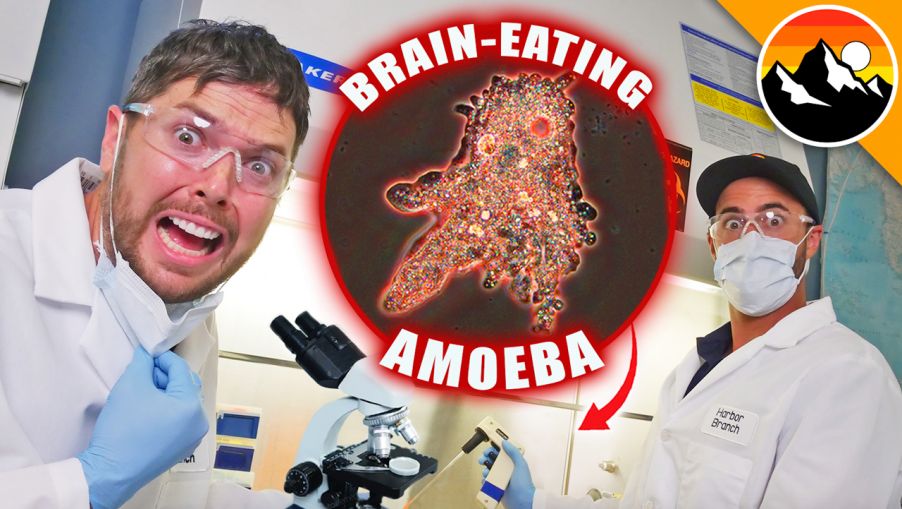One of the beauties of microbiology is seeing the unseen world all around us. Unfortunately, this ability is not readily available to many, with research-grade equipment often only accessible to professional academics. An efficient way to make microbiology more accessible is to share content on social media.
With a few clicks, an increasingly global audience can tune in to see features and creatures they may not have known existed. Research often generates a lot of imagery, much of it remaining private and for scientists’ eyes only. Sharing the microbes that are found within my samples on Instagram (microbialecology) has enabled me to connect with a wide variety of interested people from all over the world. An added benefit to social media is that advanced algorithms share content with people who may not know they have an interest in microbes, and who likely would never directly search out such content.
Some academics may view social media as a waste of time, or as a poor way to share research. Increasingly the opposite is true—potentially vast audiences, as well as quality production teams to partner with, are awaiting researchers who are willing to provide content. Social media can spread research further and help to bring it to life beyond what can be published in academic journals (many of which are also inaccessible to a general audience).
My Microbial Adventures with Brave Wilderness Reach Youth Around the World
The most entertaining collaboration I have taken part in is with the YouTube channel Brave Wilderness, which is number one in wildlife videos on the platform. They’ve attracted billions of total views, sharing the beauty of wildlife and importance of conservation with youth all over the planet.

Brave Wilderness (YouTube) hosts Coyote Peterson and Mario Aldecoa with Dr. Hunter Hines and the Olympus BX53 microscope
I was fortunate to be featured in several videos where we hunt down microbes in various environments. For example, we went snorkeling in a freshwater spring for Tardigrades and hiking into a swamp in search of the ‘brain eating’ amoeba. Showing the featured species in its habitat is important to connect that creature with the outdoors and conservation in the minds of the audience. The segments in my lab where we highlight the microbes under the Olympus microscope and talk about their morphology and how they are important to their ecosystems is equally valuable to the story.
Using the Olympus BX53 Microscope to Observe Deadly Snake Venom in Action
My latest collaboration with Brave Wilderness partnered me alongside Coyote Peterson for some unique and wild experiments. With the help of the Olympus BX53 microscope, we were able to examine the effects of deadly snake venom on human blood. This was a unique opportunity for me, as I have never had access to snake venom, which was milked right in front of us at the antivenom lab where we filmed.
The effects of venom on blood are well documented, but to our knowledge video micrographs of it happening in real time are rare. Coyote and I were thrilled to see this firsthand and to experiment on different types from several extremely venomous snakes. Watching venom destroy blood in a Petri dish is very interesting but seeing it in 400x DIC in real time on a slide was truly amazing.
If you like that video, make sure to check out part 2 where we mix Coyote's blood with viper venom and part 3 where we milk venom from a king cobra!
Sharing the Microworld on a Large Scale to Inspire the Next Generation of Scientists
With the help of social media, we can freely share this footage from the microworld with a vast global audience (the videos from these experiments are scheduled for a fall 2021 release). This sort of outreach collaboration is valuable as it will show off microbiology to a wider audience than would normally be exposed to it.
The importance of academics participating in such efforts is that they add their expertise to produce valuable educational content, which can excite and hopefully inspire the next generation of critical thinkers. There is a vast and increasingly global audience constantly awaiting content, with social media being a powerful tool to reach important demographics and share science for free to anyone with an interest.
If you're interested in learning more, check out my recent article about the power of YouTube for wildlife conservation.
*Images and video courtesy of Dr. Hunter Hines and Brave Wilderness
Related Content
Connecting with Curiosity—A Conversation with Dr. Gabrielle Corradino
Oceans, Organs, and the Outdoors: Our Most Popular Microscope Images for June 2021
Revealing the Beauty of the Microscopic Scale—IOTY’s 2019 Asia-Pacific Regional Winner


